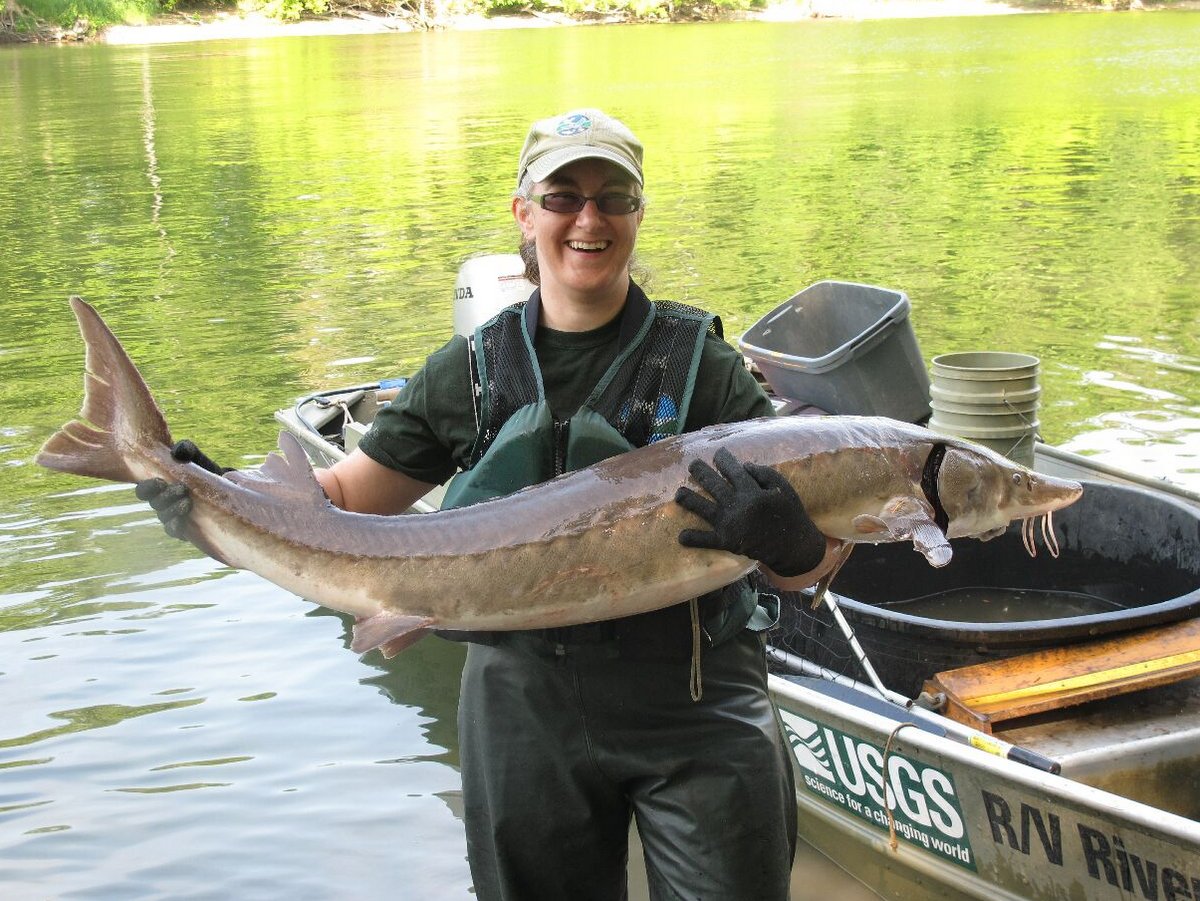In the nineteenth and early twentieth centuries, Cayuga and Seneca Lakes were known for their sea serpents, though these cryptids have become a bit scarce in recent years. Scientists of the day speculated that they must be relicts, ancient marine reptiles that survived the eons by hunkering down on the depthless, frigid lake bottoms.
The theory sounds plausible enough, until one realizes that the Finger Lakes were only formed 10,000 years ago, at the end of the last Ice Age. Whatever Old Greeny may be, it’s probably not a mosasaur.
It’s not hard to understand how stress, the power of suggestion, bad weather, low light, and imperfect vision might have conspired to make people see what was not there. But perhaps we shouldn’t dismiss these reports altogether. After all, there’s at least one ancient monster that is known to live in Cayuga Lake: the lake sturgeon (Acipenser fulvescens). The Acipenseriformes, which include sturgeons and paddlefish, have not changed their anatomies significantly for 200 million years. They look appropriately primitive and quite martial, with long bodies shaped like missiles and heavy skulls that resemble barbed arrowheads. Although they aren’t very closely related, they also share a number of traits with a far more ancient group of fish, the sharks.

NYSDEC Biologist Emily Zollweg-Horan holding a lake sturgeon
Photo: Dawn Dittman
Sturgeons, like sharks, have tough gray skin and asymmetrical tails. This asymmetry, very unusual among fish, provides vertical lift, which helps sharks chase down their prey and allows sturgeons – which can be over seven feet long and weigh more than 300 pounds – to move their gigantic bodies without too much effort. Both species have flexible cartilaginous skeletons instead of bony ones, though for different reasons. Bone is heavy, so sharks remain agile by ditching the weight and attaching their swimming muscles directly to a web of tough collagen fibers encasing their bodies. But sturgeons don’t need to be particularly fast, as their prey (invertebrates, shellfish, and the occasional invasive goby) hardly move.
They do, however, need to protect their young, even more vigilantly than most fish do. Sturgeon live well over a hundred years and take fifteen or twenty years to mature; even then, they may spawn only every half-decade. Rather than using bone on the inside, for structure and muscle attachments, sturgeon use them on the outside, for protection. The precious young fish are unpalatable to most predators because they are covered with sharp, ossified scales known as scutes. As the fish grow, the scutes turn into racing stripes of rivets along their sides, until as adults they are so large that nothing, beyond a few pesky sea lampreys, can touch them.
Perhaps it’s significant that the lake sturgeon began to disappear at about the same time that the Finger Lakes monsters did. These giant, razor-sharp fish, which once made up a staggering ninety percent of the fauna of the Great Lakes, tore up the nets of fishermen and were considered to be useless bycatch. Their carcasses were burned like cordwood to power steamboats until people developed a taste for their flesh and roe. Dams, pollution, dredging, and outrageous overfishing decimated their numbers. There were no sturgeon reported in Cayuga Lake after 1961. By 1983, they were listed as a threatened species in New York. The monster sightings seem to have stopped by then, too.
It’s satisfying to close the book on the Finger Lakes cryptids by simply proclaiming them to be particularly large sturgeons. However, this theory doesn’t stand up to scrutiny. For one thing, there’s no historical record of sturgeon in monster-heavy Seneca Lake. On the other hand, sturgeon definitely inhabited monster-poor Oneida Lake. The Finger Lakes creatures also seem to have had an aggressive streak, but sturgeon are known to be docile, even personable, and their toothless mouths are only threatening if you’re a zebra mussel. Finally, since the sturgeon population of the Finger Lakes has made an astounding comeback in recent years, thanks to the heroic efforts of the NYSDEC, you’d think we’d be seeing more sea monsters, not fewer of them. So the mystery remains. Whatever Old Greeny is, it might not be a sturgeon, either.

